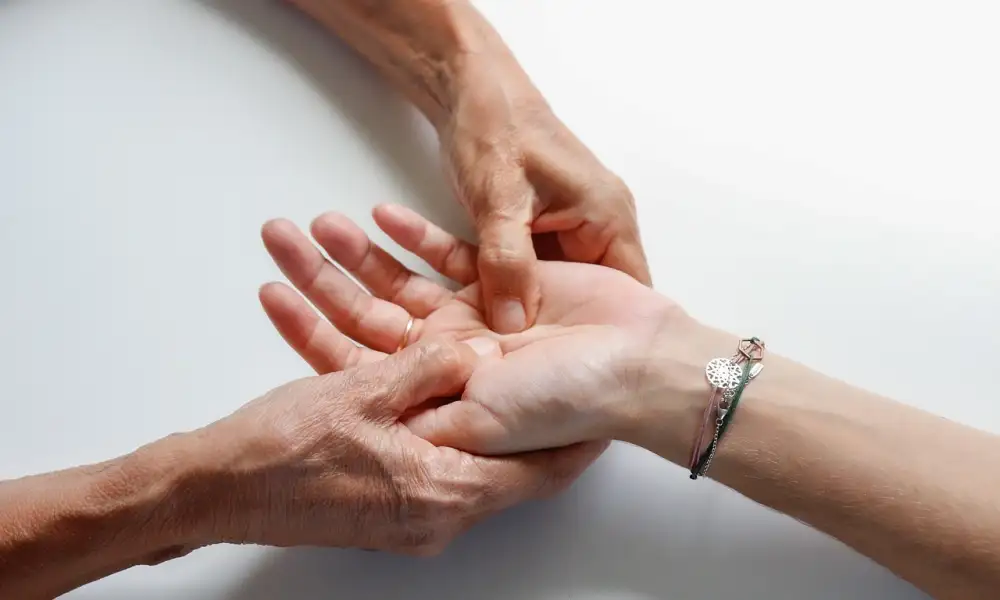Maintaining a Safe and Comfortable Environment: Addressing Concerns of Massage Creep in the Health Industry

- The Importance of a Safe and Respectful Massage Environment
- Recognizing the Signs of Massage Creep: Red Flags to Look Out For
- The Impact of Massage Creep on Mental and Physical Well-being
- How to Protect Yourself from Massage Creep: Tips for Clients
- The Role of Massage Therapists in Preventing Massage Creep
- Creating Awareness and Promoting Accountability in the Massage Industry
Massage therapy is a therapeutic practice that promotes relaxation, stress relief, and overall well-being. However, there are instances where the boundaries of professionalism and respect are crossed, leading to a phenomenon known as "massage creep." Massage creep refers to any inappropriate behavior or misconduct exhibited by massage therapists during sessions.
While the majority of massage therapists adhere to strict ethical guidelines, it is crucial for clients to be aware of the signs of massage creep and understand how to protect themselves. By recognizing and addressing these concerns, we can ensure a safe and comfortable environment for all individuals seeking the healing benefits of massage therapy.
The Importance of a Safe and Respectful Massage Environment
A safe and respectful massage environment is crucial for the well-being of clients. It ensures that they can relax and trust their therapist, knowing that their boundaries will be respected. A comfortable setting promotes a sense of security, allowing clients to fully benefit from the therapeutic effects of the massage. By prioritizing safety and respect, massage establishments can build a positive reputation and attract more clients who value their well-being.
Recognizing the Signs of Massage Creep: Red Flags to Look Out For
It is crucial for clients to be aware of the signs that may indicate inappropriate behavior during a massage session. Here are some red flags to look out for:
1. Unprofessional conduct: Pay attention to any behavior that goes beyond the boundaries of a professional massage, such as excessive touching or lingering in sensitive areas.
2. Lack of communication: If the therapist fails to explain the techniques they will use or disregards your preferences and comfort levels, it could be a warning sign.
3. Inappropriate comments or questions: Be cautious if the therapist makes suggestive remarks, asks personal questions unrelated to your health, or engages in conversations that make you uncomfortable.
4. Non-consensual touch: Any form of touch that you have not explicitly consented to should raise concerns. Trust your instincts and speak up if something feels wrong.
5. Poor hygiene and unprofessional appearance: A massage therapist should maintain proper hygiene and present themselves in a professional manner. If you notice dirty equipment, unkempt appearance, or unpleasant body odor, it may indicate a lack of professionalism.
Remember, it is essential to trust your intuition and prioritize your safety and well-being during a massage session.
The Impact of Massage Creep on Mental and Physical Well-being
Massage creep can have a significant impact on both mental and physical well-being. For victims, the experience can lead to feelings of anxiety, fear, and violation. It can also cause emotional distress, leading to decreased self-esteem and trust issues. Physically, massage creep can result in muscle tension, pain, and even injury. The negative effects on mental and physical health highlight the importance of addressing this issue promptly and effectively.
How to Protect Yourself from Massage Creep: Tips for Clients
To protect yourself from massage creep, there are several important tips to keep in mind. First, always research and choose a reputable massage therapist or spa with positive reviews and a professional reputation. Trust your instincts and only book appointments with therapists who make you feel comfortable.
During the massage, maintain clear boundaries by communicating your preferences and any discomfort you may experience. If something feels inappropriate or makes you uneasy, speak up immediately. Remember that it is your right to stop the session at any time if you feel uncomfortable.
Additionally, ensure that the massage room has proper privacy measures such as curtains or doors that can be closed. If possible, request a same-gender therapist if it helps you feel more at ease.
Lastly, consider bringing a friend or loved one to accompany you during the session for added support and security. By following these tips, you can take proactive steps to protect yourself from massage creep and ensure a safe and enjoyable experience.
The Role of Massage Therapists in Preventing Massage Creep
Massage therapists play a crucial role in preventing massage creep and maintaining a safe environment for their clients. They should undergo proper training that emphasizes professional boundaries and ethics. It is essential for therapists to establish clear communication with their clients, ensuring they feel comfortable and respected throughout the session. By setting appropriate boundaries, actively listening to client concerns, and addressing any inappropriate behavior, massage therapists can contribute to creating a safe and enjoyable experience for all.
Creating Awareness and Promoting Accountability in the Massage Industry
It is crucial to create awareness about massage creep and promote accountability within the massage industry. This can be achieved by educating clients about their rights and what constitutes appropriate behavior during a massage session. Massage establishments should also implement clear policies and procedures that address any concerns of inappropriate behavior. By fostering a culture of openness and transparency, we can empower individuals to speak up against massage creep, ensuring a safe and respectful environment for all.
In order to combat massage creep and ensure a safe and comfortable environment for all, it is crucial that individuals feel empowered to speak up when they experience or witness inappropriate behavior during massages. By breaking the silence, victims can seek justice and prevent others from falling victim to these acts.
It is important for clients to trust their instincts and listen to their gut feelings. If something feels off or uncomfortable during a massage session, they should not hesitate to voice their concerns or terminate the session immediately. Additionally, reporting any incidents of massage creep to the appropriate authorities or regulatory bodies can help hold perpetrators accountable and prevent future occurrences.
Massage therapists also play a vital role in preventing massage creep. They should be trained in recognizing and addressing inappropriate behavior, creating an atmosphere of trust and respect with their clients. By maintaining professional boundaries and actively listening to client feedback, therapists can ensure a safe space for healing.
Creating awareness about massage creep within the industry is essential. Education programs, workshops, and seminars can help inform both therapists and clients about what constitutes appropriate conduct during massages. This will promote accountability and encourage individuals to report any instances of misconduct without fear of retaliation.
By working together as a community, we can create a culture that rejects massage creep and prioritizes the well-being of all individuals involved in the health industry. Let us empower ourselves and others to speak up against massage creep, ensuring that every massage experience is one of relaxation, healing, and respect.
Published: 25. 12. 2023
Category: Health



